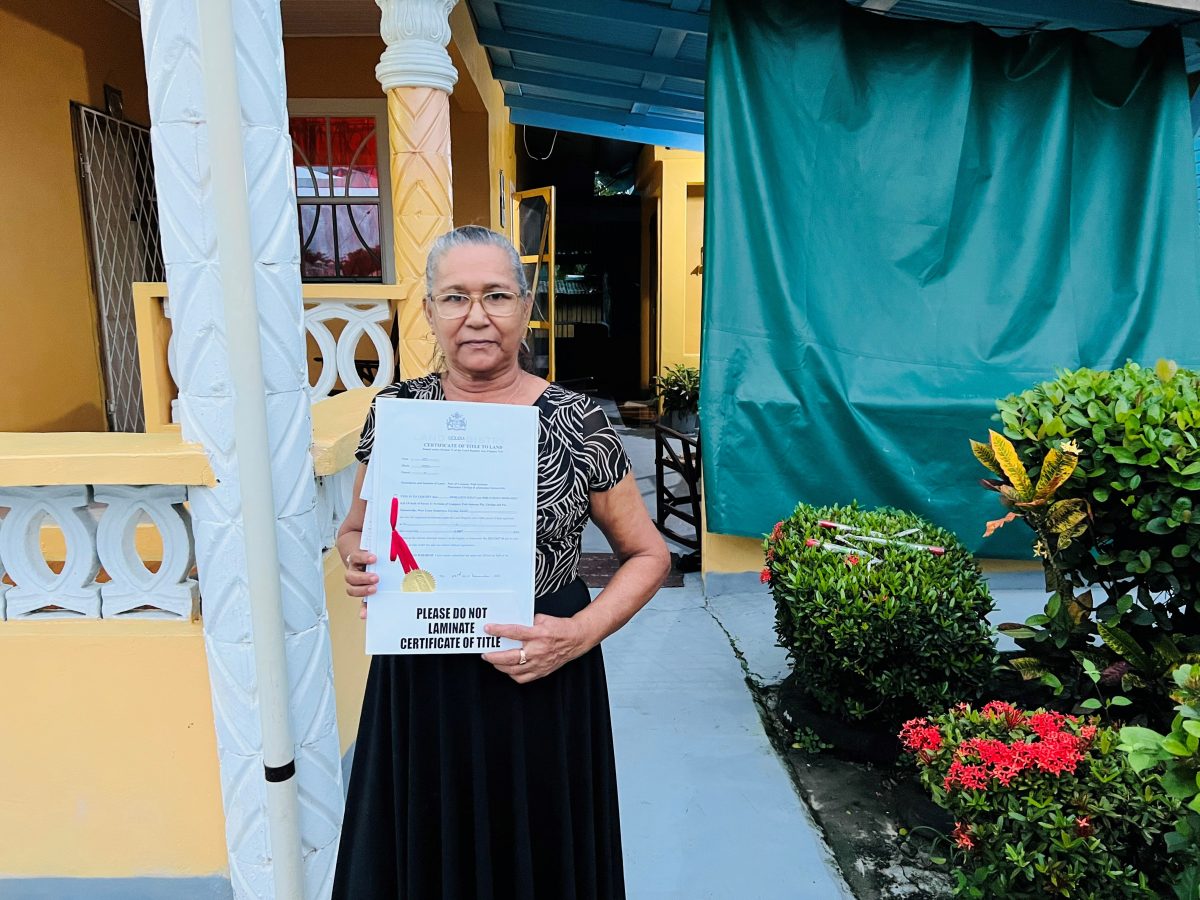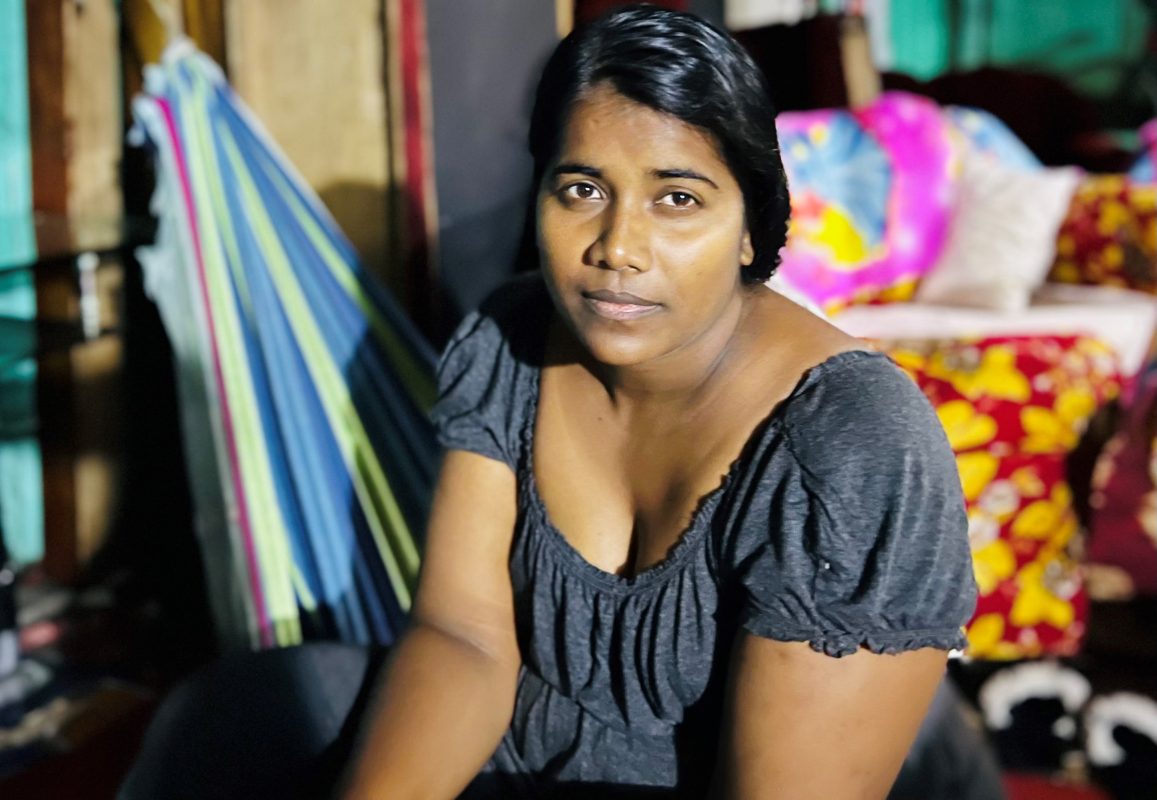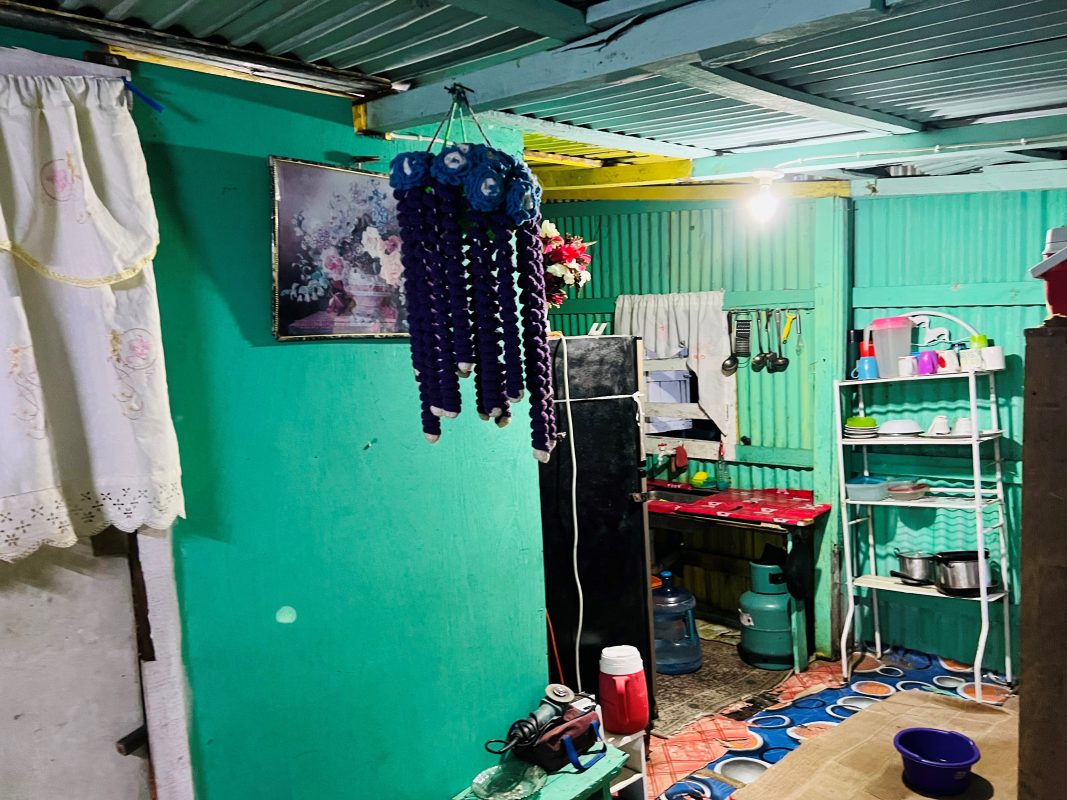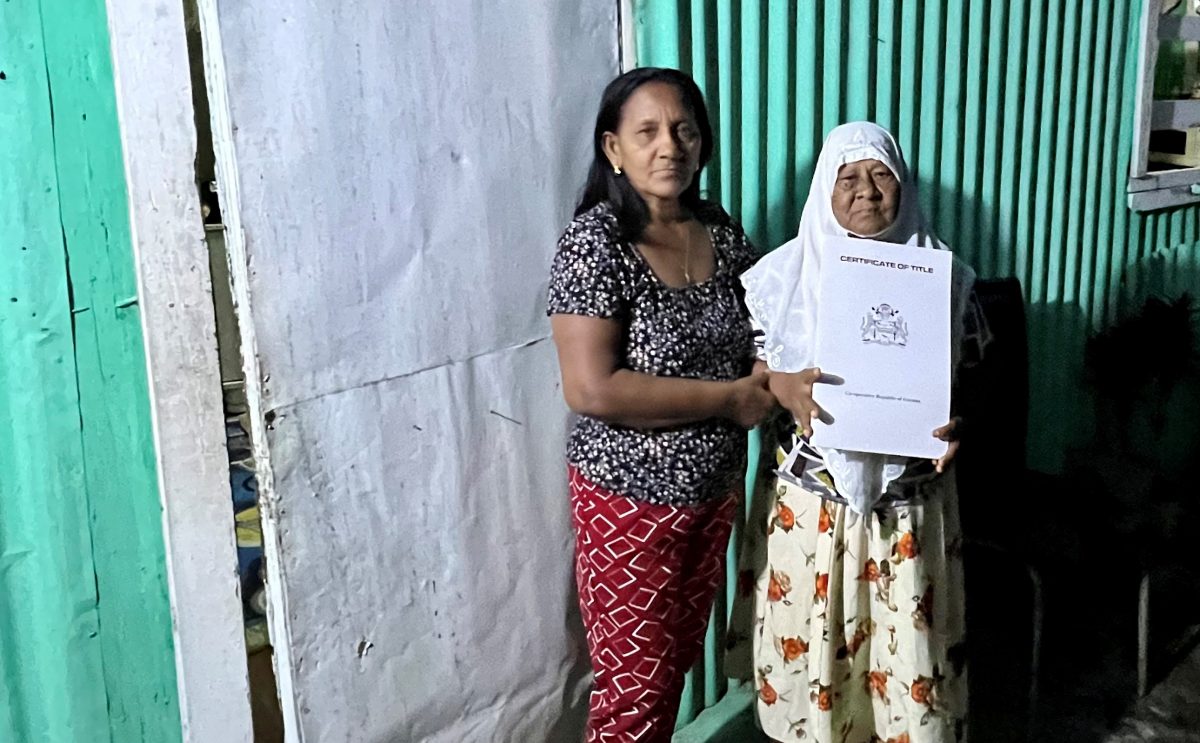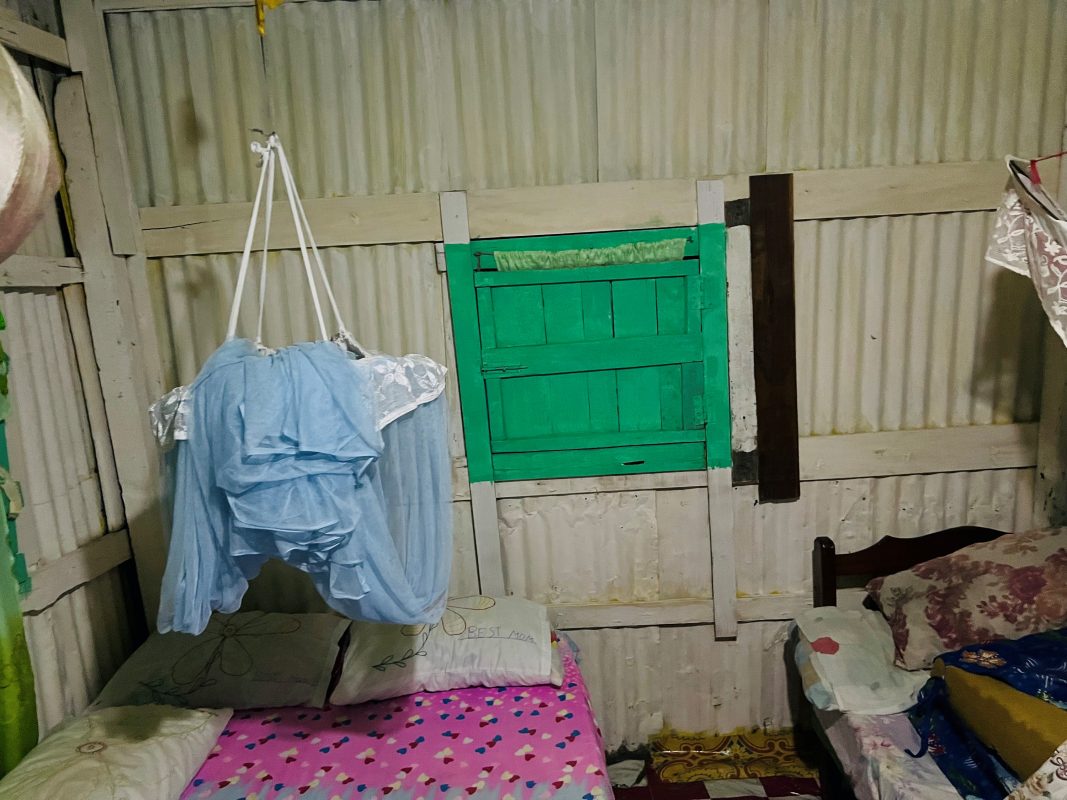As 63-year-old Farida Khan sat in the room to receive her Certificate of Title (CoT) for her house lot she cried tears of joy, knowing that it was finally happening six generations later, starting with her great grandparents who came from India as indentured labourers.
Khan of Uitvlugt Side Line Dam, West Coast Demerara, was among 76 squatters out of 174, who received their CoT recently from Minister of Housing & Water, Collin Croal at the Greenwich Park Primary School.
Farida, the fourth generation to occupy the land, told Stabroek News in an interview that she was “very happy because I live here for so long… Meh eye water leak in there just now because I never see wah name title. Meh mother and father never see title yet. I got my two children here and my granddaughter born here too.”
Chairman of Region 3, Inshan Ayube acknowledged that the wait was a long one with anxiety, disappointment and frustration.
He noted that it took long because “a lot of thought and planning had to be put in place and government could not come up with ideas on how to deal with the expansion of highways,” which could have resulted in the squatters being removed.
Referring to those who were squatting on the roadside, the chairman said the new Schoonord/Parika highway that is currently being built, would bring closure to the expansion of the current one.
He said too that while “the government is sympathetic, it cannot allow anything to hinder progress in the country.”
Chandradai Budhram decided to squat on a piece of land on the Railway Embankment at Greenwich Park, 32 years ago because she “had nowhere else to go.” She never knew she would receive Title for it and lived in fear that one day she would be removed “because it is the government reserve.”
She had knocked up a small wooden house and over the years she upgraded until she finally owns a one-flat concrete house. Her husband was also feeling happy.
Rohan Kishun has been living on the Uitvlugt Side Line Dam for the past 45 years and he said it feels good to get his Title.
Mindy Roopnarine said his mother is originally from Essequibo and she started living at Uitvlugt several years ago. He moved from Essequibo to live with her “and look after her because she got old…”
He felt “really good” to receive the title because “I waited for it for a very long time. I wanted to do some repairs but I had no documents… Seeing that I get through now, I can do anything.”
Other residents from the Uitvlugt Side Line Dam, as well as those from Greenwich Park and Tuschen, East Bank Essequibo (EBE) who had squatted for several years were also elated to receive the long awaited CoT.
The minister said 384 residents also have occupied the railway embankment at Vergenoe-gen, Philadelphia, Barnwell, De Willem, De Kinderen and Tuschen, EBE and that the Ministry has not objected to them being regularized.
The survey work is ongoing and he has made a commitment to return by the end of the first quarter to hand over those CoTs as well.
He also mentioned the squatters on the Parika Sea Dam and said that he had promised this newspaper that a team will visit this month.
He pointed out that sea dams are a “no no for regularization. Sea beds, riverbanks are a no no… The sea defence is protecting them from erosion and from any possible flooding, so obviously we have to have access to ensure maintenance is done.”
Croal reiterated that: “You can’t build anything there because when you have overtopping from the salt water it can be very destructive.”
He advised the residents to “do the right thing and visit the regional office and make an application for a house lot and in due time it will be processed.”
Mud logies
Khan and three of her siblings were born in one of the mud logies that housed three families in separate apartments. Several other logies stretched across the narrow land on the sideline dam, which is bordered by trenches on both sides.
Khan reminisced that while growing up her maternal grandparents and parents “used to daub the walls” with mud to preserve it. When she got older she helped to do it as well.
Her great grandparents came on the ship from India along with other indentured immigrants to work on the sugar plantation.
They were originally from Bihar and Uttar Pradesh. Farida’s older cousins went to India to trace their roots and found their relatives.
With sugar production remaining the main source of income in the area, her grandparents, her parents and even she and her husband also worked at the Uitvlugt Sugar Estate.
“GuySuCo money mind me, my husband and my children, it educate them and got them married and it give me a house,” she declared proudly. She started working at the age of 20 and served the estate for 25 years.
She recounted that she woke up at 3 am and cooked for her husband to go to work. After he left, she prepared her children’s food for school, looked after her cows and sheep and tidied her house before leaving at 7 am to go to work.
She started out at the estate as a labourer but after a while she felt she was underpaid and successfully filed a case against the estate. She was then promoted to the post of field foreman. At the age of 45 she stopped working after she had an accident and was given a “pay off.”
She learnt that her paternal great grandmother died while coming on the ship, leaving her grandmother, who was two-years-old at the time, behind. She was raised by another immigrant woman who got her married when she grew up, to her grandfather, Ali Akbar.
Her maternal great grandmother, who died 63 years ago, right after Farida was born, was pregnant during the journey on the ship. She gave birth to a baby girl after arriving in Guyana. They were the first ones to live on the land that Farida can now call her own.
During the “riot in 1964,” her grandparents moved and squatted on another plot of land nearby. They made a mud house and used troolie leaves for the roof. They eventually bought the land for $1. They spoke mainly Urdu/Hindi with a little English in between.
Her grandmother made a “fireside on the ground and she used to sit and do her cooking. Her food used to be spicy.” Her grandparents, who planted a kitchen garden and reared creole chicken, loved daal and would cook it almost every day to go with either smoked herring, saltfish, mackerel, potato or bhagie. Their food was simple and they hardly ate meat.
Residents later broke the walls of the logies that separated the apartments and built independent houses. They improved them over the years and Farida now has a one-flat concrete house.
Shaimoon Khan
Her neighbour, 76-year-old Shaimoon Khan, who was also very happy to receive her CoT, was never able to completely change the style of the logie and still lives in poverty.
She has `zinc’ sheets walls around the house instead of mud and the interior walls have been replaced with ply boards, but the house still has the shape of a logie.
Shaimoon was originally from Leguan and when she got married at the age of 16 she moved in with her husband, his parents and his grandparents. They lived in the middle section of the logie and she had to “daub the walls.” Several years later, the walls on both sides were removed and they all got their independent homes.
She recalled that after she got married she used to wake up at 3 am every day to prepare food for her husband to take to work. After he left she would prepared her children’s food for school, and clean the house. When they were a little older and her husband developed a back pain she started working on a ground provision farm at Anna Catherina from 7 am to 4 pm.
“We were very poor and we punished a lot to live in the house,” her daughter, Bibi, told this newspaper. “We never had enough money to make it over. She [mother] bear a lot in this place… snake, crappo, ants, roaches and everything would go in there.”
She said too: “Me and my sister used to cooperate and help we mother to fix the house, bit by bit. But it still leaking.”
Bibi who has grown children and is separated, has moved back with her mother. She has accumulated a little money to “knock this house down and make something decent for my mother. I would make a one-flat two-bedroom concrete house with indoor washroom.”
She pointed out though: “I don’t have a lot (of money) but I heard the government is giving cement and stone if you can’t afford and that would really help us.”
Minister Croal had mentioned at the meeting that 51 people from Region 3 applied for the subsidy programme of cement and steel to start their foundation. The verification was done and the residents would soon receive their vouchers.
Meanwhile, Shaimoon suffers from severe arthritis in both knees and is unable to do much. Bibi said she would “take care of her. How long more she has on this earth she should spend it comfortable.”
Shaimoon had also developed cataracts in both eyes and had actually become blind when she was in her 40s. Eventually she had it corrected at the Georgetown Public Hospital and is now able to see clearly and “can thread needle now.”
The elderly woman along with Bibi and her handicapped son who Shaimoon used to care for, her granddaughter Nafeeza Usman and her husband and their five children, ages seven to 14, are currently living in the same house.
Nafeeza’s husband is from Wales, West Bank Demerara and she and her family were living in a house belonging to his mother, who is in Suriname. The house is old and is leaking and they cannot stay there now. They started building a house behind that one three years ago. The roof and other work need to be completed before they can move in, but they are unable to find the money to do it.
Her husband is “not healthy” and she is willing to start a business but she does not have capital. She was also planning to apply for the 10 days’ temporary employment work with the Neighbourhood Democratic Council, even though it would still not be enough.
She would be grateful if she could get any help to make their lives more comfortable.
